|
Medical Imaging Interaction Toolkit
2016.11.0
Medical Imaging Interaction Toolkit
|
|
Medical Imaging Interaction Toolkit
2016.11.0
Medical Imaging Interaction Toolkit
|
This plugin was developed at the Centre For Medical Image Computing (CMIC), part of University College London (UCL) and contributed back to the MITK community with thanks.
This view provides the facility to run third party command line programs, and load the data back into the DataManager for immediate visualisation. All that is required is that the command line application can be called with an argument of –xml and respond with a valid XML description of the necessary parameters, and currently, that if the program requires images, they must be NifTI images. This view can then generate a Graphical User Interface (GUI) dynamically from the XML to enable the user to interact with the command line application. This provides an easy to use, and potentially very flexible way to integrate almost any third party, medical imaging, command line application.
As a high level introduction, this view performs the following steps:
As a consequence of the very flexible nature of this plugin, these instructions can only describe how to launch command line modules in a general sense. The examples shown have been constructed by downloading the latest version (subversion commit 329) of the NiftyReg package, available here, and described further here. NiftyReg provides valid XML descriptors to enable the integration of the NiftyReg affine (RegAladin) and and non-rigid (RegF3D) image registration algorithms, as well as utility programs to resample an image, and calculate a Jacobian image. These same XML descriptors work within Slicer and MITK based applications.
The first time that the Command Line Modules View is launched, it is advisable to set the user preferences for the view. Please refer to Figure 1.
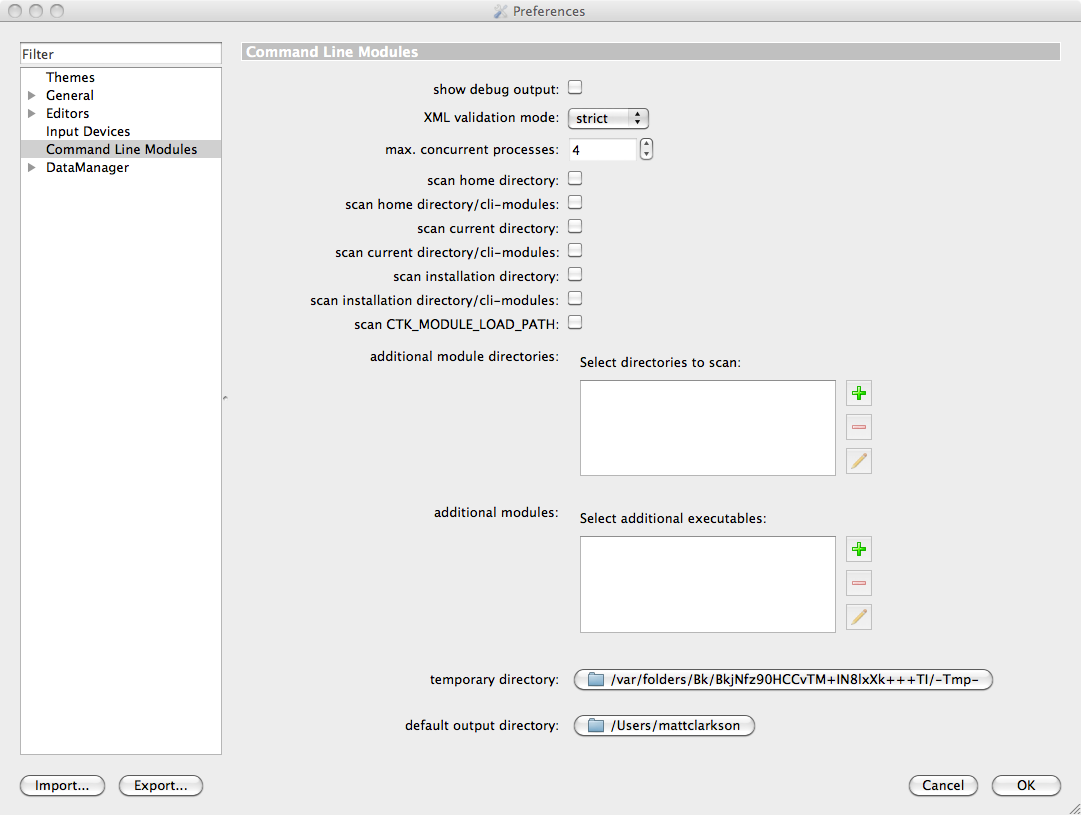
Each of these preferences is now explained in some detail.
The next 7 preferences are to control where the view will search for valid command line programs. By default these are off as the searching process can take a long time and slow down the startup time of the GUI. The options provided are:
In most cases, it is suggested that the user will leave these options unchecked, as the user can also specify custom directories, and even cherry-pick specific command line programs to load. Figure 2 shows a selection box that enables the user to specify custom directories to scan, and Figure 3. shows a selection box that enables the user to select specific modules. Picking specific directories, and specific executables will most likely make the application quicker to launch.

." \_linebr \image latex cmdlinemodules_PreferencesAdditionalDirectories.png "Figure 2. The User can specify specific directories to scan"." width=7.90cm

." \_linebr \image latex cmdlinemodules_PreferencesAdditionalModules.png "Figure 3. The User can specify specific command line programs to load"." width=7.92cm
These directory and file selection boxes enable directories or files to be added, removed and updated in a similar fashion.
The user must make sure that the list of files selected in the "additional modules" section are not already contained within the directories specified in the "additional module directories" section.
In addition, the preferences page provides:
When the view is launched, a simple interface is presented, as shown in Figure 4.
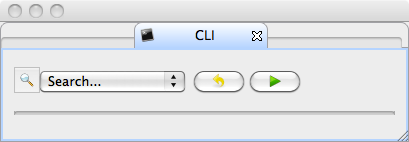
In this example, all the above check-box preferences were off, and the "additional module directories" was empty, and the "additional modules" list was empty so no command line applications were found. The "Search" box displays zero entries, and there is nothing to search.
If the available search paths contain programs that are compatible (i.e. runnable) with this view, the name of the programs are displayed in the "Search" box in a nested menu, shown in Figure 5.
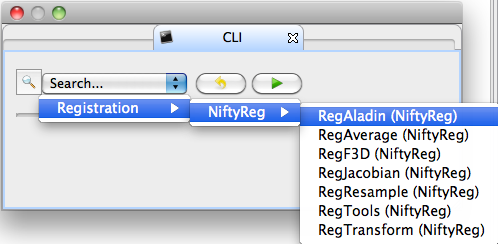
When a program is selected, the relevant interface is displayed, by default as collapsed group boxes to save space. Each section can be individually expanded if necessary to see the parameters.
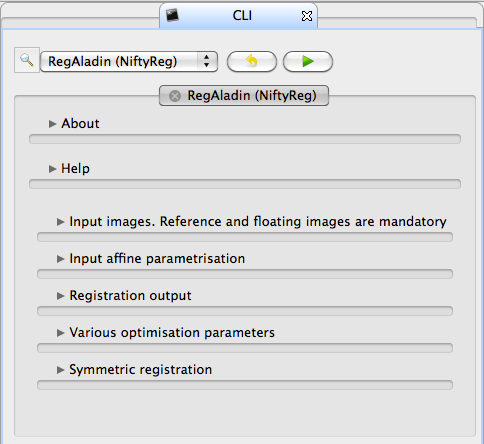
In this example, the parameters are displayed for NiftyReg produced at UCL, and more specifically for the affine registration program called RegAladin. The interface can contain a wide variety of controls. If a parameter for a command line program is an input image, then the widget displayed is linked to the DataManager, so that as new images are loaded, the correct image can be easily selected from the combo box.
At this stage, multiple tabs can be opened, with one tab for each command line program. Figure 7 shows 2 tabs, for the RegAladin and RegF3D programs.

The main view provides some simple controls:
At this stage, nothing has been launched. When the user hits the green arrow button, a job is launched. Each running job is shown as a new progress reporting widget under the main tabbed widget, as shown in Figure 8.
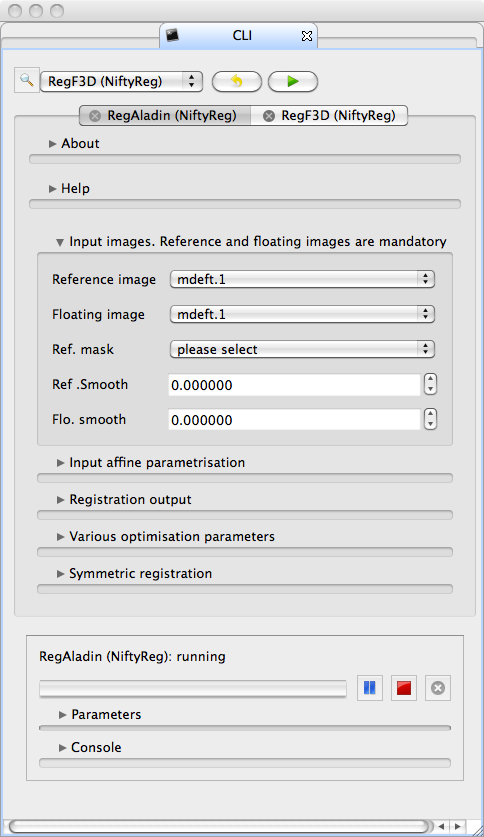
The controls for each running job are:
When the user hits the green arrow in the main view:
It is easy to run multiple jobs. The green button simply launches the job corresponding to the current tab repeatedly. It is up to the user to make sure that any output file names are changed between successive invocations of the same command line module to avoid overwritting output data.
In addition, each set of parameters contains an "About" section containing details of the contributors, the licence and acknowledgements and also a "Help" section containing a description and a link to any on-line documentation.
These documentation features are provided by the developers of the third party plugin, and not by the host program. If information is missing, the user must contact the third party developers.
From a technical perspective, the Command Line Modules View is a simple view, harnessing the power of the CTK command line modules framework. For technical information see:
and obviously the CTK code base.